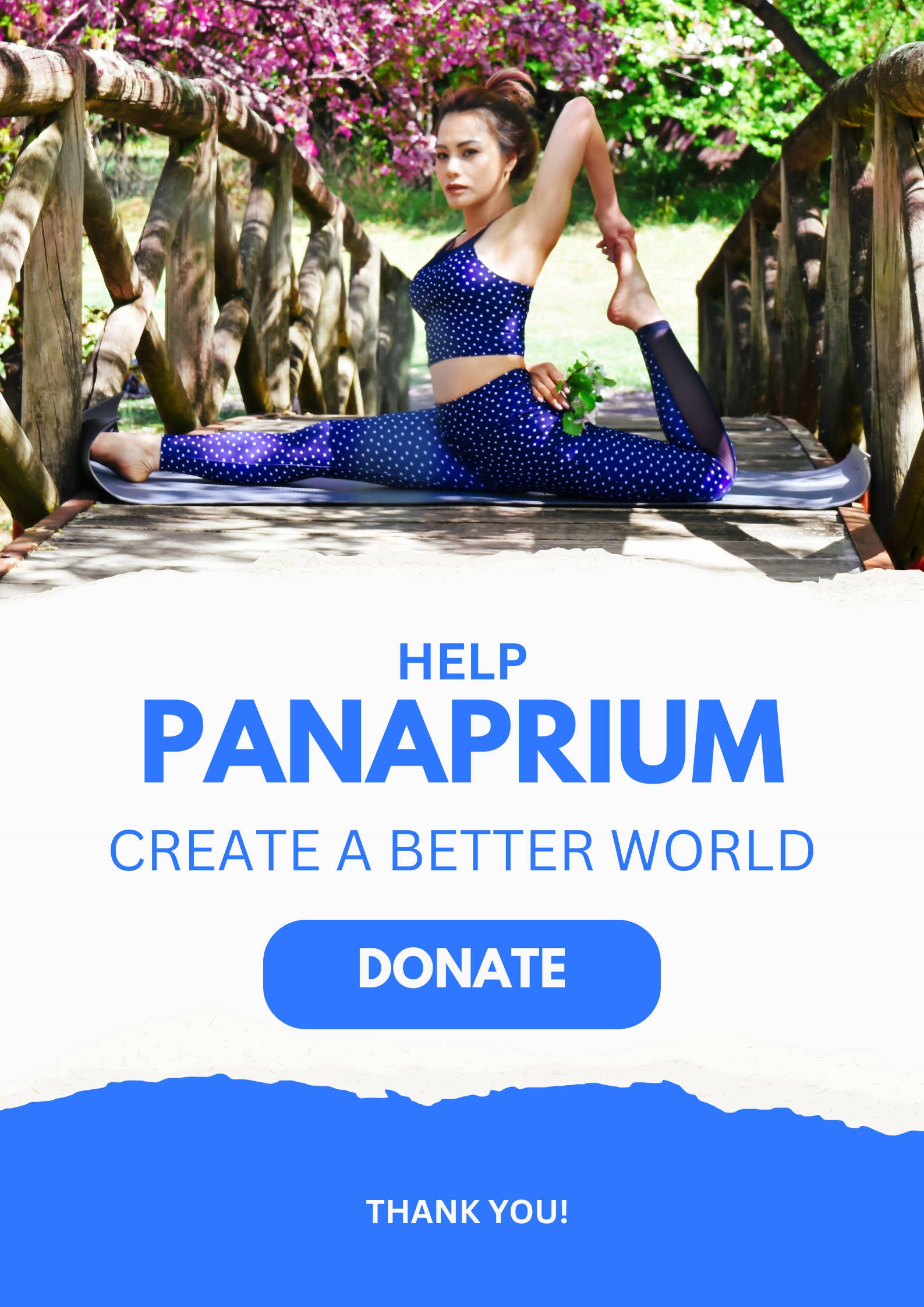
Nylon is one of the world's most versatile and useful synthetic material. It's a petroleum-based plastic polymer widely used to make fibers and textile fabrics in the fashion industry.
Since its debut in the 1930s, nylon has conquered the whole world and is found in a multitude of applications today. It's one of the most successful synthetic fibers next to the polyester used by many apparel brands and retailers.
It's cheap to produce and has amazing properties for fashion, especially for tights and stockings. It's made from petrochemicals that can be molded to create affordable clothes and save a lot of money on raw materials.
The main advantage of synthetic nylon, also commonly named polyamide, compared to natural fibers is its very low cost.
But synthetic fabrics made of nylon fibers aren't the most environmentally friendly. Global nylon production keeps increasing and cause disastrous consequences for people, animals, and the planet.
Here is what you need to know about synthetic nylon fabrics.
Panaprium is independent and reader supported. If you buy something through our link, we may earn a commission. If you can, please support us on a monthly basis. It takes less than a minute to set up, and you will be making a big impact every single month. Thank you!
What is nylon

Nylon is a synthetic polymer made from petroleum-based plastics. It's made of extremely long and heavy molecules. Nylon refers to the whole group of plastics, similar, and chemically related materials called polyamides.
Nylon was the first man-made fiber discovered before the first World War. It was first commercially produced in 1938 by American chemical company DuPont for its durability and strength to make synthetic toothbrushes. Its conception was officially declared at the 1939 World's Fair.
Nylon is often used in the textile and apparel industry. Synthetic nylon fibers are woven into fabrics to make fleece, circular knits, coats, sweaters, sportswear, swimwear, hosiery, shoes, underwear, and accessories.
Nylon is also used in umbrellas, household textiles, rugs, carpets, cooking utensils, outdoor furniture, gun parts, food packaging, and industrial materials.
Nylon is commonly found in fishing nets, tents, ropes, tires, seat belts, sleeping bags, curtains, tennis rackets, parachutes, machine gears, and more.
Nylon fiber is usually blended with other natural or synthetic fibers such as spandex or elastane to make it more elastic, even though it can be used alone.
Various types of nylons

Nylon is the name of a large family of plastics since there are many types of nylons with various properties making them useful for different applications.
The original and most common form of nylon is nylon 6,6. Once it was patented by DuPont, competitors like BASF had to find alternatives.
Other types of nylon include nylon 6. It's the second most popular form of nylon after nylon 6,6.
Nylon 6,12 is a moisture absorbing nylon. It's less strong and durable than nylon 6 and often found in cosmetics.
Nylon 4,6 is a high heat resistant yellowish thermoplastic. The only commercial supplier of this type of nylon is Dutch multinational corporation DSM. It's used in brakes and cooling systems.
Nylon 5,10 is an alternative to nylon 6,6 invented by DuPont and mostly used in scientific applications.
Nylon 12 has the lowest water absorption, heat resistance, and strength. It's often found in bath products, deodorants, and skincare products.
Nylon is also used in bulletproof vests and is known under the brand name Kevlar. It's a heat-resistant and high-strength synthetic fiber.
Nomex is another brand name of nylon used to create fireproof textiles for suits and gloves.
Similar to Nomex, Technora is a high-strength, heat, and chemical resistant nylon brand name.
Zytel is a high strength, abrasion, and impact-resistant thermoplastic. It's a nylon brand name from DuPont for high-performance nylon 6,6.
How are nylons produced
Nylon was the first man-made synthetic fiber. It's recognized as one of the most important chemical discoveries of all time. Nylons and polyamides are tough, strong, elastic, easily resist oil and grease.
Nylon became popular as a silk and hemp replacement when shortages and price fluctuations from Asia occurred in the 1930s. Synthetic nylon fabrics have many benefits and steadily gained a more prominent market share, particularly for the production of nylon stockings and lingerie.
Today, stockings remain one of the major applications of nylon fabrics. It's also used in pants, leggings, tights, and other fitting bottoms for men and women.
Nylon production involves the condensation polymerization of a plastic solution. It's usually produced in facilities that also make other synthetic materials, including polyamides, polyesters, and acrylics.
Chemists at the DuPont chemical company first produced nylon by combining chemicals extracted from petroleum, natural gas, coal, water, air, and agricultural by-products.
Monomers of hexamethylenediamine, also known as 1,6-diamino hexane, mixed with adipic acid, also called hexane-1,6-dicarboxylic acid, create nylon 6,6.
The two molecules from which nylon 6,6 is of contains 6 carbon atoms each. Other forms of nylon are made by mixing different starting chemicals.
The condensation polymerization process eliminates water and forms a big repeating molecule to create nylon sheets or ribbons that are then shredded into chips. The process requires high temperatures (about 285°C or 545°F), consumes tons of water, energy, and chemicals.
Nylon fibers used in the textile and apparel industry are created through spinning, a process that employs a heated mechanical spinneret with tiny holes to melt solid chips of nylon.
Depending on the size and shape of the holes, the characteristics, length, and thickness of the resulting nylon fiber vary.
Denier is a unit that measures the strength of nylon yarn. It indicates how heavy a 9-kilometer long yarn is. Tights and stockings with higher denier measurements are thicker and stronger.
After being purified and extended to make long filaments, nylon fibers are ready to be spun into yarns, which are then woven into fabrics by textile manufacturers.
The making of long filaments is an important step in nylon fiber production. Fiber extension is necessary to create commercial textiles that use nylon fiber many times longer than its original length, which increases production efficiency and lowers the overall cost.
Although the popularity of synthetic fibers has been on a steady decline for a few decades, especially in the United States, the global nylon market is still growing.
The United States was the largest producer of nylon until the 1980s. But many nylon production operations moved to East Asia and China's capacity developed rapidly over the last decades.
Today, China is the largest producer and exporter of nylon in the world with 54% of the global total, followed by the United States (25%), and Taiwan (11%), according to the Taiwan Man-Made Fiber Industries Association (TMMFA).
China's nylon demand was over 4 million tons in 2018, which represents a 14.2% increase from the previous year.
The executive Vice President of Hengyi Formosa Petrochemical Co Wang Songlin believes that the global nylon production capacity will exceed 10 million tons annually by 2025.
The global nylon market size was valued at USD 23.64 billion in 2018 and is expected to grow at a CAGR of 3.3% from 2020 to 2026. It's expected to reach USD 30.77 billion by 2026, according to the report by Fortune Business Insights.
Nylon properties

Nylon fiber is a unique material with many unique properties. It's generally used in the same applications as polyester in the apparel and footwear industry.
Nylon is strong, tough, elastic, and lightweight. It's resistant to attacks from moths, molds, insects, fungi, and some everyday chemicals.
Nylon melts in phenol, acids, and many other harsh chemicals.
Nylon fiber is fairly stiff and has excellent resiliency and tenacity.
Nylon can also be dyed easily in brilliant colors.
It's waterproof and quick-drying, unlike many natural fibers such as cotton or wool. That's why nylon is often used in activewear and swimwear.
Nylon fiber isn't resistant to sunlight or UV degradation. the physical and mechanical properties of nylon degrade quite fast when placed in the sunlight. A UV stabilizer is often added to nylons in outdoor equipment.
Nylon is also highly prone to pilling. When blended with other synthetic or natural fibers, it lowers the overall cost of the garment but also reduces its lifespan considerably.
Nylon is easily flammable. Avoid wearing nylon clothing while cooking, welding, or playing with fireworks.
Nylon is a fully synthetic material, Fabrics made of nylon aren't breathable at all. They are designed to repel water and capture heat with a low level of absorption, much like acrylic.
Nylon fiber limits airflow considerably and can lead to overly high body temperatures in hot climates. Luckily, nylon wicks away moisture and dries quickly.
Clothes made of nylon are lustrous and easy to wash. However, washing nylon fibers in hot temperatures not only consumes an unnecessarily high amount of energy but also can melt and damage the fabric.
It's best to wash nylon clothing, especially hosiery and underwear, separately by hand with moderately warm water and hang it to dry.
Nylon advantages and disadvantages

Here are some of the best advantages of nylon fabrics:
- Easy to dye
- Good elasticity
- Moths, molds, insects, fungi resistance
- Good abrasion resistance
- Good wrinkle resistance
- High tensile strength
- Moderate chemical protection
- Good resilience
- Good durability
- Affordable
- Lightweight
- Water repellant
- Quick-drying
- Easy to wash
The main disadvantages of using nylons are:
- Low pilling resistance
- Low breathability
- Low thermal stability
- Poor heat resistance
- Poor absorbency
- Poor resistance to UV and sunlight
- Gathers static electricity
- Environmental impact
Environmental impact of nylon

Despite the increased environmental concerns regarding textile manufacturing and consumption, global nylon production isn't declining.
It's still largely used in cars, appliances, electronics, coatings, cables, and machines.
The biggest problem of nylon is its disastrous environmental impact. Nylon isn't biodegradable or compostable. It also increases our consumption of fossil fuels and dependency.
Nylon fibers take hundreds of years to decompose. As nylon breaks down, it releases toxic chemicals and greenhouse gases into the environment.
Synthetic fabrics like nylon destroy ecosystems and nature. They contribute to the high amount of clothing waste that ends up in landfills every year.
Nylon fabrics release plastic microfibers into the environment that pollute entire food chains, kill land and marine wildlife, and endanger human health.
Every year, more than 300 million tons of plastic are produced, as reported by the United Nations. 8 million tons of plastic are dumped into the ocean annually. Less than 10% of all plastic is recycled.
If current trends continue, our oceans could contain more plastic than fish by 2050. And the plastic industry could account for 20% of the world’s total oil consumption.
Additionally, a by-product of nylon production is nitrous oxide (N2O). It's a potent greenhouse gas that contributes to catalytic stratospheric ozone destruction for about 150 years, according to scientific research.
Nitrous oxide is 300 times more potent than carbon dioxide (CO2) and 15 times more than methane because it traps far more infrared radiation.
Because of the high rates of global adipic acid production necessary to polymerize nylon, the amount of nitrous oxide in the atmosphere is increasing by about 0,2% per year.
Large quantities of water are used to produce nylon. The textile industry is responsible for 17-20% of the world's wastewater, according to the World Bank.
Wastewater transport pollutants to rivers, water sources, and the ocean. Only 20% of the world's wastewater receives proper treatment, as reported by the United Nations.
Sustainable alternatives to nylon

Fortunately, more sustainable alternatives to nylon exist. Many ethical fashion brands and designers around the world avoid the use of synthetic fabrics like nylon completely.
Instead, they use environmentally friendly natural fibers such as organic cotton, linen, and hemp, regenerated cellulosic fibers such as lyocell, cupro, and modal, or recycled nylon.
Nylon can be recycled, recreated, and remolded and become brand new again to create new products without having to use new resources.
Synthetic fabrics like polyester, nylon, and acrylic are often used in clothing because they are cheap. Unfortunately, recycled nylon is much more expensive.
Recycled nylon isn't the most sustainable fiber but its environmental impact is much lower than the virgin material.
Econyl is one popular brand of recycled nylon that manufactures regenerated fibers from post-consumer plastics, carpet flooring, fishing nets, and other industrial wastes.
For every 10,000 tons of Econyl raw material, up to 70,000 barrels of crude oil and 57,100 tonnes of CO2 emissions are saved. It reduces the global warming impact of nylon by up to 80% compared to the raw material from oil.
Another option is Q-NOVA recycled nylon 6,6 fiber developed by Fulgar and certified by the Global Recycled Standard (GRS). Its production uses the MCS process, a locally-based mechanical regeneration system that doesn't require chemicals.
It's time to rethink how we produce and consume clothes. One of the best ways to be more sustainable is to choose eco-friendly and high-quality materials.
Here are some of the best sustainable fashion brands that create fabulous clothes out of recycled nylon to reduce plastic waste:
- Vitamin A, a swimwear brand that sustainably produces luxury bikinis, swimsuits, and beachwear.
- Eileen Fisher, an American fashion brand that reinvents the way to sustainably source fabrics like recycled polyester and nylon to create eco-friendly, ethical clothes.
- Swedish Stockings, modern environmentally conscious pantyhose changing the entire hosiery industry.
- Dear Denier, socks and stockings for modern women contributing to a sustainable disruption of the hosiery industry.
- Mara Hoffman, a premium designer brand that creates dresses and swimwear out of hemp, recycled textiles, and other eco-friendly materials.
- Lanius, an exclusive selection of sustainable clothes made with recycled nylon from the oceans.
- Stella MacCartney (UK), a designer committed to creating sustainable and recycled fashion with regenerated materials.
- TALA (UK), cute, stylish, technical, empowering, and environmentally friendly activewear for women.
Was this article helpful to you? Please tell us what you liked or didn't like in the comments below.
About the Author: Alex Assoune
What We're Up Against
Multinational corporations overproducing cheap products in the poorest countries.
Huge factories with sweatshop-like conditions underpaying workers.
Media conglomerates promoting unethical, unsustainable products.
Bad actors encouraging overconsumption through oblivious behavior.
- - - -
Thankfully, we've got our supporters, including you.
Panaprium is funded by readers like you who want to join us in our mission to make the world entirely sustainable.
If you can, please support us on a monthly basis. It takes less than a minute to set up, and you will be making a big impact every single month. Thank you.































0 comments